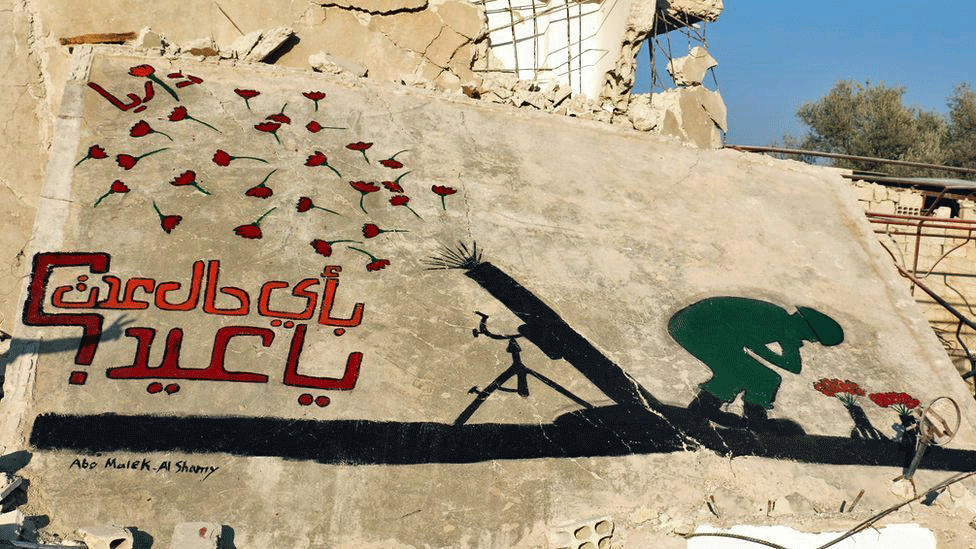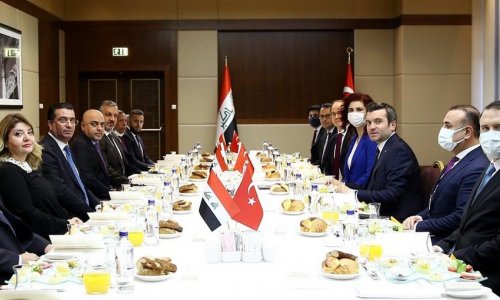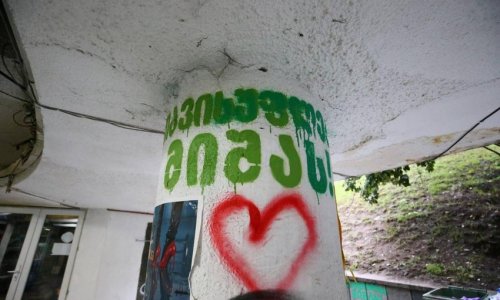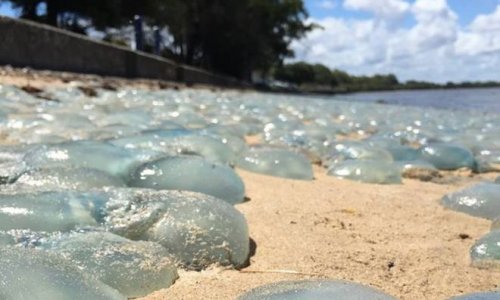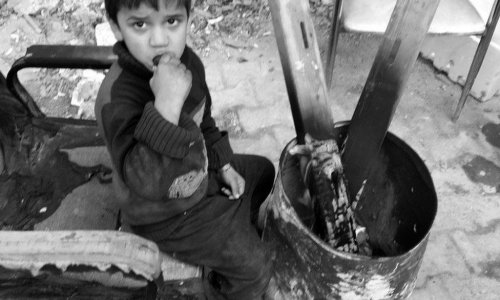Rebel fighter by day, artist by night - a young Syrian's street art offers a sharp commentary on the country's civil war.
a sharp commentary on the country's civil war.
 a sharp commentary on the country's civil war.
a sharp commentary on the country's civil war.As a suburb of Damascus faced near-constant bombardment and a chronic lack of food, water and power, an incongruous mural appeared on the wall of a bombed-out building.
It showed a young girl standing on a pile of skulls writing a single word on a wall: Hope.
The painting brought the artist Abu Malik al-Shami to international attention and earned him comparisons with Banksy. Like Banksy, he is a politically aware street artist whose paintings have often appeared suddenly and overnight, but his messages and images are adapted to Syria's cataclysmic civil war.
For two years, from summer 2014 to summer 2016, Shami's murals popped up in dozens of locations throughout Darayya, 10km from the centre of Damascus.
Before the war started in 2011 the artist, now 22 years old, was attending high school in Damascus. He joined anti-government protests in the capital and began using his self-taught artistic skills to spread revolutionary messages.
But in early 2013, still a teenager, he travelled to Darayya to join the Free Syrian Army, taking his sketchbooks and pencils with him.
On his first day in Darayya, he says, he was taught to shoot a gun. On his second day, he was sent to the front line. It was only much later, in 2014, that he met an artist named Majd, nicknamed the "Eye of Darayya" who encouraged him to take up street art.
His first mural, on the ruins of a large house, depicted a girl pointing to a heart - teaching a soldier about love, before he goes out to fight.
Getting artistic supplies was initially a problem.
"When I arrived in Darayya, I was completely shocked," he says. "There was huge destruction everywhere, and at that time, the regime was shelling randomly and attacking people. The situation was miserable, we couldn't bear it. Everything was collapsing."
This was also true of the one of Darayya's art shops, which by 2014 was in ruins. With the permission of the shop owner, Majd, Shami and others dug through the rubble to find paint and brushes.
owner, Majd, Shami and others dug through the rubble to find paint and brushes.
 owner, Majd, Shami and others dug through the rubble to find paint and brushes.
owner, Majd, Shami and others dug through the rubble to find paint and brushes.There was also the risk of being shot by a sniper or being hit by a bomb, and Shami says it was particularly risky to work on rooftops.
"The best times were sunset, or sunrise, or when there was quiet throughout the city," he says. "Sometimes we had to do it at night, so whenever there was a full moon, I used that time to paint murals. Sometimes I also used the light of my mobile phone.
"The process was very tiring ," he says. "Every day, I used to fight on the front line, and only in my free time would I paint and draw."
," he says. "Every day, I used to fight on the front line, and only in my free time would I paint and draw."
 ," he says. "Every day, I used to fight on the front line, and only in my free time would I paint and draw."
," he says. "Every day, I used to fight on the front line, and only in my free time would I paint and draw."As time went on Shami and his friends began to run out of paint. At a certain point he had only red, black, pistachio green, gloss yellow and brown to work with.
He was also out of action for part of 2015 with a battlefield injury .
.
 .
.In his two years in Darayya he still painted more than 30 murals.
In January 2016, his friend Majd was killed.
Syrian government forces took the city in August and along with hundreds of others Shami fled to rebel-held Idlib in northern Syria.
Street art, particularly graffiti, is notoriously ephemeral, and with government forces in charge of the town, the fate of Shami's works is perilous.
So before leaving the city, he took photos of all the murals and graffiti he had painted over the years. And he is continuing his outdoor art on the streets of Idlib.
(BBC)










www.ann.az
Follow us !

